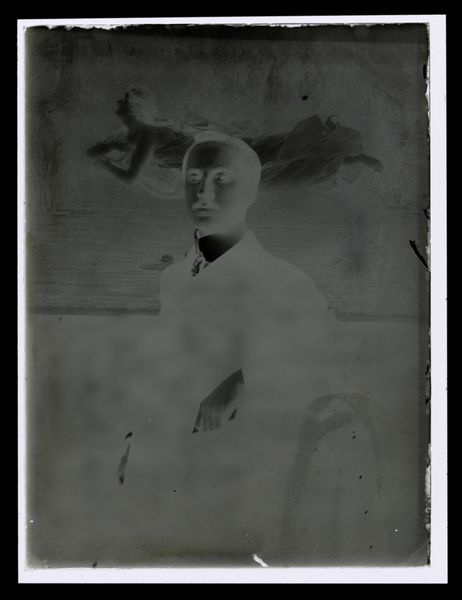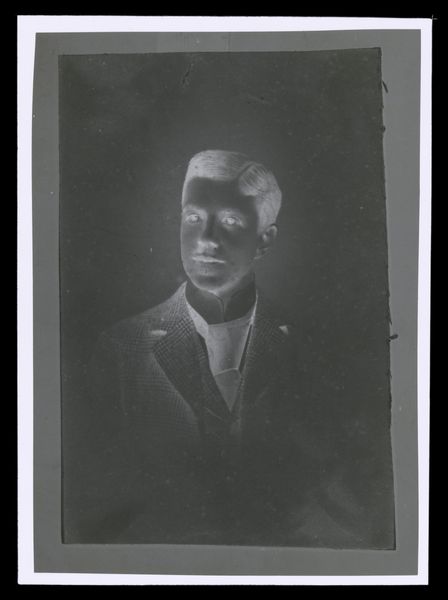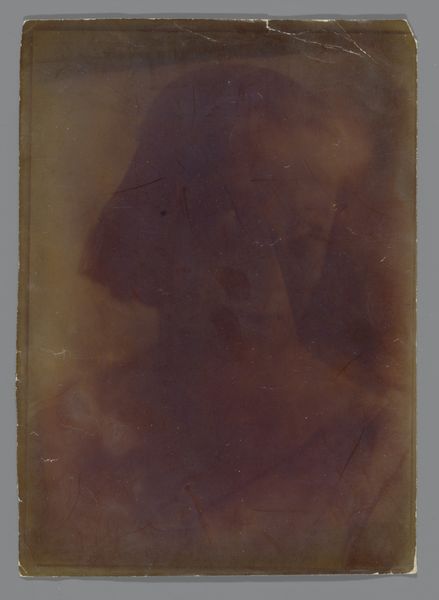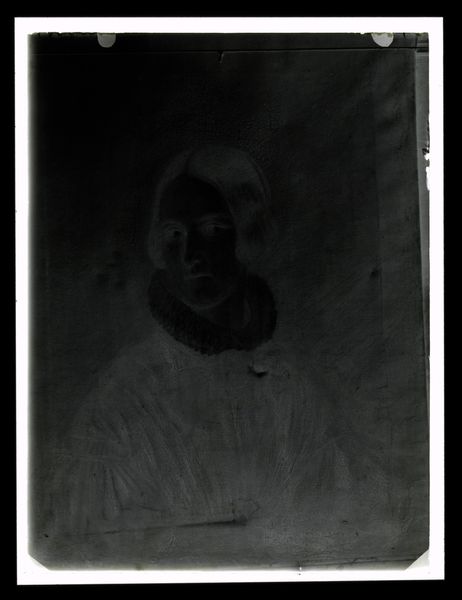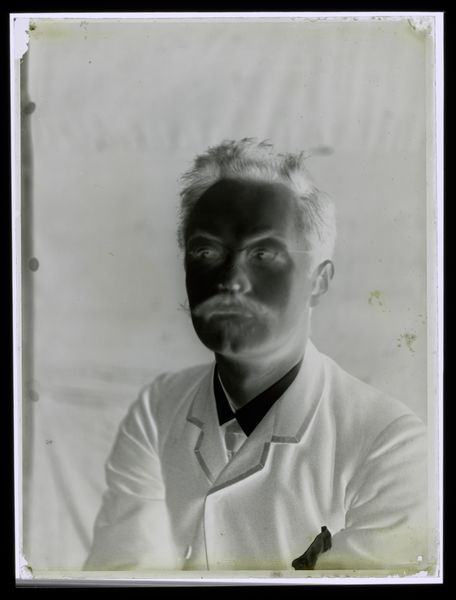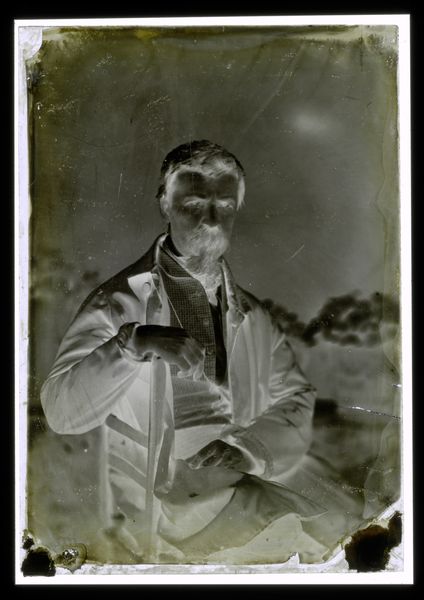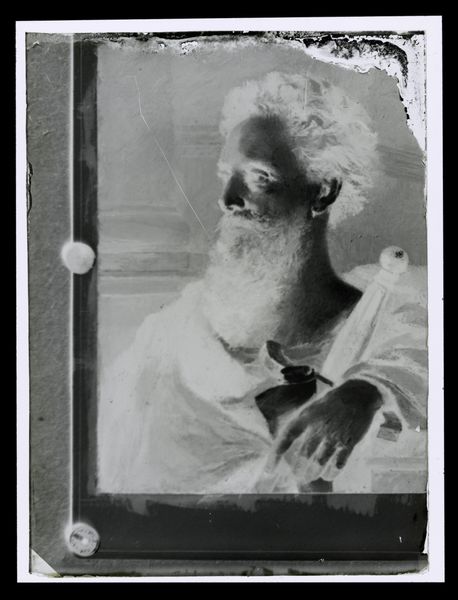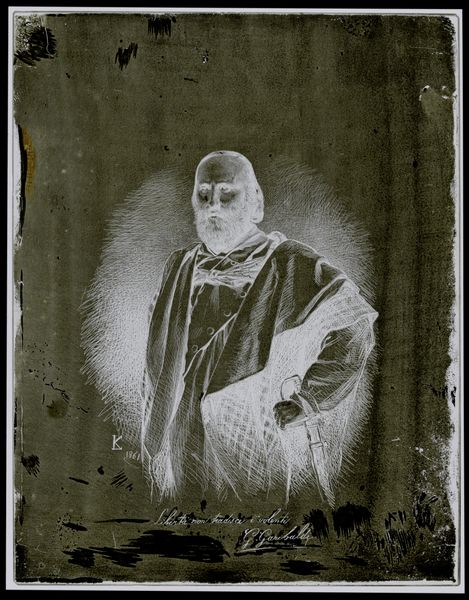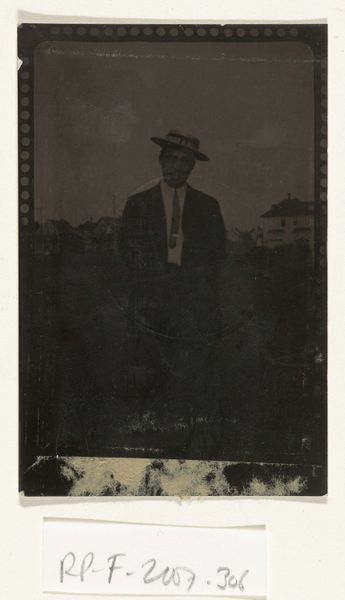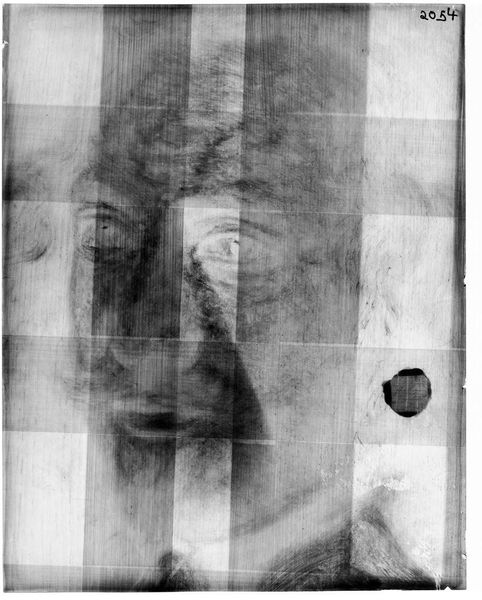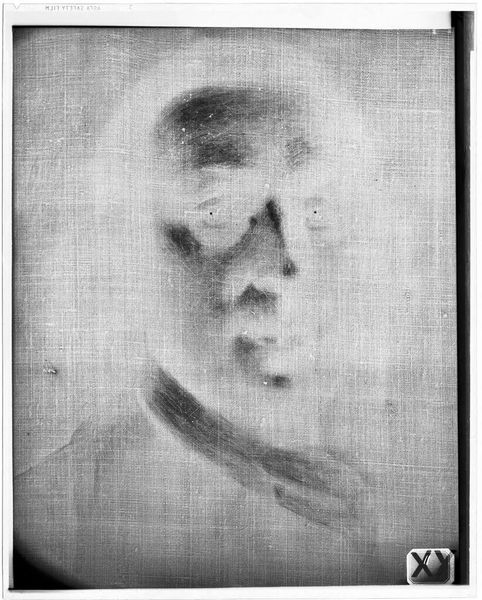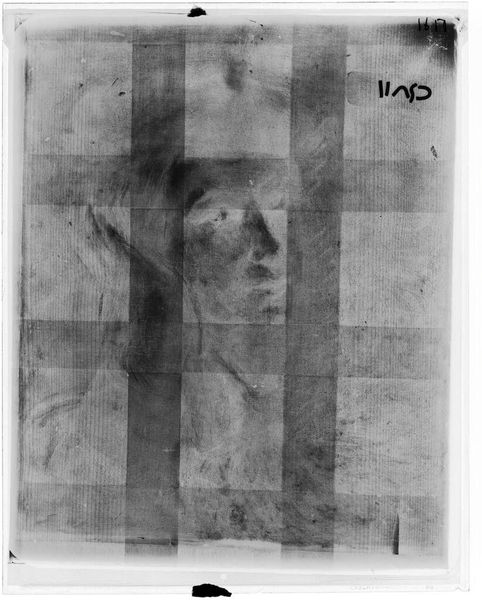
photography, gelatin-silver-print
#
portrait
#
photography
#
portrait reference
#
gelatin-silver-print
#
portrait art
#
realism
#
statue
Dimensions: height 130 mm, width 180 mm
Copyright: Rijks Museum: Open Domain
Curator: What a striking portrait. Alphons Diepenbrock’s “foto,” created sometime between 1895 and 1925, is a gelatin silver print, full of compelling tonal contrasts. Editor: The negative exposure is immediately disarming. The stark white eyes piercing through the deep shadows lend the subject a haunting quality, like a specter caught in a fleeting moment. Curator: Indeed. This photographic negative presents the sitter, most likely Diepenbrock himself, in an unexpectedly vulnerable state. Note how the reversed tones invert our expectations of representation, disrupting the conventional relationship between light and shadow. Editor: How does the history of photographic portraiture inform our reading? Early photography was often preoccupied with capturing likeness and achieving a sense of permanence. This subversion, however, suggests a deliberate manipulation, perhaps an artistic experiment with identity and self-perception? Curator: Certainly, one must consider the materiality itself. Gelatin silver prints provided a means of achieving sharper images than earlier photographic processes, which facilitated a more detailed and lifelike portrait. Here, though, the negative presentation softens those crisp details, abstracting the man even as the medium offers clarity. The glasses he wears also add a striking visual feature. Editor: It's difficult not to read into the socio-political context of its time. In a world that demands self-confidence, there's a refreshing display of this private perspective. What's arresting about this reversed exposure is how it creates a barrier. He seems unknowable, caught between worlds, and inaccessible despite the apparent clarity of the image. Is this, perhaps, a symbolic reflection of the human psyche itself? Curator: Perhaps. Whether a commentary on societal demands or purely a formal experiment, the strength of this portrait resides in the questions it raises. Diepenbrock uses the familiar form of portraiture to investigate more profound themes. Editor: Ultimately, it compels me to look beyond the surface and grapple with the nature of visibility and truth itself.
Comments
No comments
Be the first to comment and join the conversation on the ultimate creative platform.
